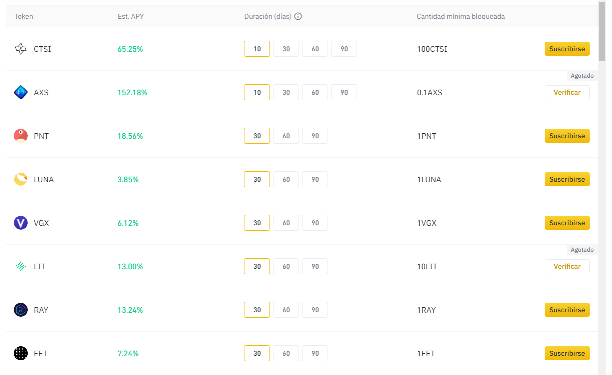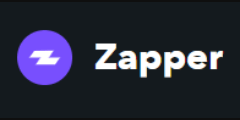Cryptocurrency staking on top platforms

Many people doubt the reliability of cryptocurrencies because they think that "nobody" monitors the transactions. What if I told you that you can validate them in exchange for rewards? This is done in a process called staking, and it is one of the most common practices among investors.
In this article I will tell you what staking is, what types there are, how it works, where to do it and what are its advantages and disadvantages.
What is Staking?
Staking is a process of block crypto-currencies within a wallet to contribute to the proper functioning of the blockchain. Staking is voluntary, and for this you receive rewards in the form of said cryptocurrency.
If you want to start investing in cryptocurrencies, we recommend that you start buy your first tokens on Coinbase. If you deposit 100 euros by registering on OUR LINK, you will earn an extra 10 euros!
But how exactly are you helping the blockchain by locking up your cryptocurrencies?
As you well know, every cryptocurrency belongs to a blockchain, and within it transactions can be carried out that must be validated.
To validate transactions, each blockchain uses a different mechanism, although the main ones are Proof of Work (PoW) and Proof of Stake (PoS), the two acronyms of the English terms.
The main cryptocurrency that works with PoW is Bitcoin, and the validation protocol used is mining. Some examples of cryptocurrencies whose consensus protocol is PoS are: Cardano, Solana, Algorand…
In a nutshell, Proof of Stake(PoS) blockchains use stored cryptocurrencies to validate transactions, so they are the main ones for staking.
In this protocol, each node functions as a transaction validator, so by simply holding these cryptocurrencies and sending them to a staking wallet, you can start receiving rewards from the network.
Difference with mining
Each blockchain validates transactions in a different way, although you already know that there are PoS(staking) blockchains and PoW chains, like Bitcoin.
Proof-of-work (PoW) chains validate transactions through a process called mining. More how is it different from staking?
In staking, to validate transactions and contribute to the development of the blockchain, you just need to lock your crypto-currencies in a wallet. Thereafter, a smart contract takes care of validating and rewarding you. The higher the number of tokens or cryptocurrencies locked, the greater the possibility of obtaining rewards.
Instead, to validate a transaction on a PoW blockchain, each miner must solve a mathematical puzzle to add a new block to the chain. Of course, this doesn't mean that you have to take a pen and paper, since the operations are performed by a computer (more precisely a GPU).
Thus, the greater the number of computers and their processing speed, the more possibilities you have of mining a block, and therefore, of obtaining a reward.
At first glance, you can already see the big difference in the effort involved in mining compared to staking. All this, not to mention that the maintenance of a mining farm has very high energy costs.
This is the main reason why Ethereum, a PoW network, is going to switch to a PoS mechanism for its 2.0 release, which we may see in the near future.
Which cryptocurrencies allow staking?
As I said, the tokens and crypto-currencies that allow staking are those whose blockchain uses Proof of Stake (PoS) as a transaction validation mechanism.
There are many cryptocurrencies with these characteristics, but everything indicates that the most important will be Ethereum 2.0, when the second largest blockchain by market capitalization is updated.
Other changes brought about by the Ethereum upgrade include moving from a PoW blockchain to a PoS blockchain, making Ethereum staking a reality.
To do this, Ethereum offers a system with 2 types of validators; For one, those with more than 32 ETH can be full validators and can stake their ETH normally.
Instead, if you have less than 32 ETH, you can partner with a company to stake your ETH with other investors, earning returns in the same way.
Types of staking
If you are interested in staking, you should know that there are several types according to the following classification criteria:
Type of PoS validation mechanism
According to PoS validation type:
Proof of Stake (PoS)
This is the PoS mechanism I've talked about so far.
As an investor, you can block your cryptocurrencies and make them available to the blockchain to validate transactions, and in return you get a reward. The more cryptocurrencies locked, the higher the rewards.
Delegated Proof of Stake (DPoS)
Delegated Proof of Stake is a little different, as each token or cryptocurrency you hold is converted into a set number of votes, which you can use to choose a delegate.
The chosen delegates manage the blockchain, take care of security, consensus and its improvement and, once the staking rewards are distributed, they distribute them to their constituents (based on the votes you have contributed).
The way to bet
Regardless of the validation method used for validation, the following types can be differentiated based on how you implement it:
Cold staking
The cold staking is which can be done from cold wallets, i.e. those without an internet connection.
This is a great advantage because it allows you to earn rewards passively by keeping your crypto in the safest place possible.
It is not possible to do this with all cryptocurrencies, but if you have the possibility, it is one of the most interesting alternatives.
Staking groups
Do you remember I told you that in POS you are more likely to get rewards the more cryptocurrencies you lock?
In a situation like this, in which there are holders with hundreds of thousands of tokens, a small investor would have nothing to do, right?
On your own you probably won't, but for that there are staking groups, which are nothing more than associations of small investors who come together to stake their funds together and then split the profits evenly.
Most exchanges that allow staking from their own platform create groups of this style to allow all users to stake their cryptocurrencies.
Staking providers
Staking providers are platforms that offer the possibility of staking without having a large capital. In this way, they are a centralized way to create a staking pool.
Staking platforms
If you are considering staking your cryptocurrencies but are unsure which platform to choose, here is a summary of the most important ones:
Centralized exchanges
Most centralized exchanges offer staking services from their own platform, so you don't need to withdraw your crypto from the exchange to get rewards. Some of the main ones are:
Coinbase

Coinbase is one of the largest exchanges in the world, and also one of the most respected by institutions.
It has not been offering staking services for a long time, and although they have already been introduced, the truth is that they still have a long way to go to catch up with other exchanges.
They offer staking services only for 6 cryptocurrencies, and the rewards do not exceed 5% per year:
- Ethereum (ETH)
- Algorand(SOMETHING)
- Cosmos(ATOM)
- Tezos (XTZ)
- Dai(DAI)
- USD Coin(USDC)
Additionally, they are creating a list of users interested in staking with Ethereum 2.0, and you can sign up on their website if you wish.
Binance

Today, Binance is the largest cryptocurrency exchange in the world by volume.
Of course, something like this is not achieved by offering only cryptocurrency trading services, but the catalog of this exchange house goes much further.
In terms of staking, Binance's offer is quite extensive, and with some cryptocurrencies very high returns can be achieved.
Poloniex
Poloniex is an exchange that has gained great fame in recent years for its low commissions and the quality of the platform and its services.
Among these, staking stands out, although unlike Binance, its offer is relatively small, since they only offer staking with:
- Cosmos(ATOM)
- TRON (TRX)
- BitTorrent (BTT)
- GLANCE(WIN)
Private wallets
Although not all, some private wallets allow you to stake your cryptocurrencies. Here are some examples:
Registre
Ledger is one of the most popular physical cold wallets today. In addition to helping you store your cryptocurrencies securely, it allows you to stake a large number of assets.
Some of the main ones are:
- Ethereum (ETH)
- Peas(DOT)
- Gimbal(ADA)
- Avalanche (AVAX)
- Earth(MOON)
Trusted portfolio
Trust Wallet is a virtual cryptocurrency wallet that you can use to keep your crypto safe. Although it is not as secure as Ledger, since it is a hot wallet (connected to the internet), it provides an additional layer of security against leaving cryptocurrencies in the exchange.
In addition to storing cryptocurrencies, buying and trading them, Trust Wallet also allows staking, although for the moment its offer is reduced to:
- Bitcoin (BTC)
- Ethereum (ETH)
- BinanceCoin(BNB)
- Cosmos(ATOM)
- Cake(CAKE)
- Tezos (XTZ)
- Tron(TRX)
DeFi staking platforms
More centralized exchanges and wallets, DeFi platforms also have very interesting alternatives for staking. Here are just a few:
Synthetix
Synthetix is a decentralized platform that allows you to invest in almost any asset through the creation of synthetic replicas of them.
Among the multiple tools offered by Synthetix, staking stands out, as the rewards they offer for staking their SNX token exceeds 25% per year.
Funding of the year
Year Finance is a DeFi protocol whose goal is to bring DeFi tasks such as yield farming or liquidity mining closer to blockchain users.
The platform does not yet offer staking options as such, and although they are not identical, you can still practice yield farming, which is also locking up funds in exchange for rewards.
compound
Compound Finance is a decentralized platform with a protocol that allows users to grant and contract loans securely and anonymously.
Although this is not a typical staking platform, you can passively earn rewards by donating your cryptocurrencies to the platform, so in the end the outcome is similar.
AAV
AAVE is a very similar platform to Compound Finance, as its main purpose is to provide a decentralized cryptocurrency lending service.
Instead, it also offers the possibility of staking, but only with the Aave(AAVE) platform token.
The expected return on AAVE staking may vary over time, but is generally around 6-7% annual return.
Other platforms
Other platforms of interest:
Fictional networks
Figment Networks is a blockchain infrastructure provider. It is one of the largest professional transaction validators in the world, offering staking services for a large number of tokens and cryptocurrencies.
Its operation is very simple; you just need to access its website, search for the asset you want to staking and follow the steps indicated by the platform. These are usually:
- Go to the official website of the token or cryptocurrency.
- Find one of Figment's wallet addresses. You can find them on their website.
- Delegate your tokens to this validator by following the steps on the asset page.
With this, your funds will be staked with those of other users, allowing you to get rewards even if you have little capital.
Participation capital
The operation of Stake Capital is very similar to that of Figment Networks, since you must delegate your cryptocurrencies to their services so that they can stake them (keeping custody at all times).
The return offered by Stake Capital varies depending on the asset, although it fluctuates between 5 and 15% per year.
Staked
Staked offers cryptocurrency staking and DeFi lending services. The operation of staking is the same as that already mentioned in the 2 previous platforms.
For its part, Staked stands out by offering a large catalog of cryptocurrencies with which you can bet, and some of them offer very high returns (over 40%).
MyContainer
Like all previous platforms, MyContainer gives you the option to delegate your cryptocurrencies to their own validator so they can stake them for you.
The particularity of MyContainer is that it also offers services such as the sale of crypto-currencies, exchange, access to Airdrops and Giveaways...
However, and although it is an interesting platform, its offer of cryptocurrencies with which you can bet is not very high, although the rewards are not bad at all and are between 7 and 40%.
Staking facilities
Staking Facilities is a staking company similar to the previous ones, in which as an investor you delegate the staking of your cryptocurrencies to one of the company's validators.
Although it is a small company, they have a large number of staking tokens and the quality of their services is very high. However, the supply of cryptocurrencies and their profitability are not the best on the market.
Advantages and disadvantages of staking
If you've made it this far, I'm sure you can agree with me that staking is a very interesting form of investing, or rather HODL, but what are its positives and negatives?
Here are his main advantages:
It allows you to passively earn cryptocurrencies by simply keeping your cryptocurrencies in a wallet.
You don't need any special device for staking.
✔️Staking rewards are distributed in the form of the cryptocurrency you have locked, so it is a perfect technique for potential crypto projects.
✔️Staking (PoS) is a much cleaner process in terms of energy than proof of work, which saves costs and electricity.
✔️Staking revenue is very stable and in most cases predictable. Therefore, you can find out how much cryptocurrency you will receive after the blockade is over.
And here are its drawbacks:
❌No investment is without risk, and staking is no exception. The wallet you lock your funds into can be hacked, although if you're using a high-quality one you're unlikely to encounter this problem.
❌If you are a small investor, you need to partner with others in order to achieve profitability. Some platforms do this automatically, but on other occasions you need to delegate the process to third parties.
Tips for staking
Before you start blocking your cryptocurrencies, I recommend that you take a look at the following tips:
- Only block cryptocurrencies that you want to hold for the long term. Thus, you will not be forced to withdraw them if market volatility increases.
- When choosing a staking platform, you should not only consider the expected profitability, but also its commissions and security.
- Calculate the return you will get before locking cryptocurrencies, it might not be worth the wait.
Final Notices
In short, staking is a very powerful tool that allows you to contribute to the proper development of the blockchain by earning rewards in the form of cryptocurrencies.
Like all investments, staking comes with risks, including the fact that you cannot touch cryptocurrencies for a long time, without being able to react to market movements.
For this reason, I recommend that you only practice it with projects that you want to maintain for the long term. The ones you wouldn't sell even if their price crashed or lost momentum.
In addition, it does not require any type of electronic equipment, but you can do it with your own exchange or wallet account or, if you prefer, you can delegate the process to a specialized company.




